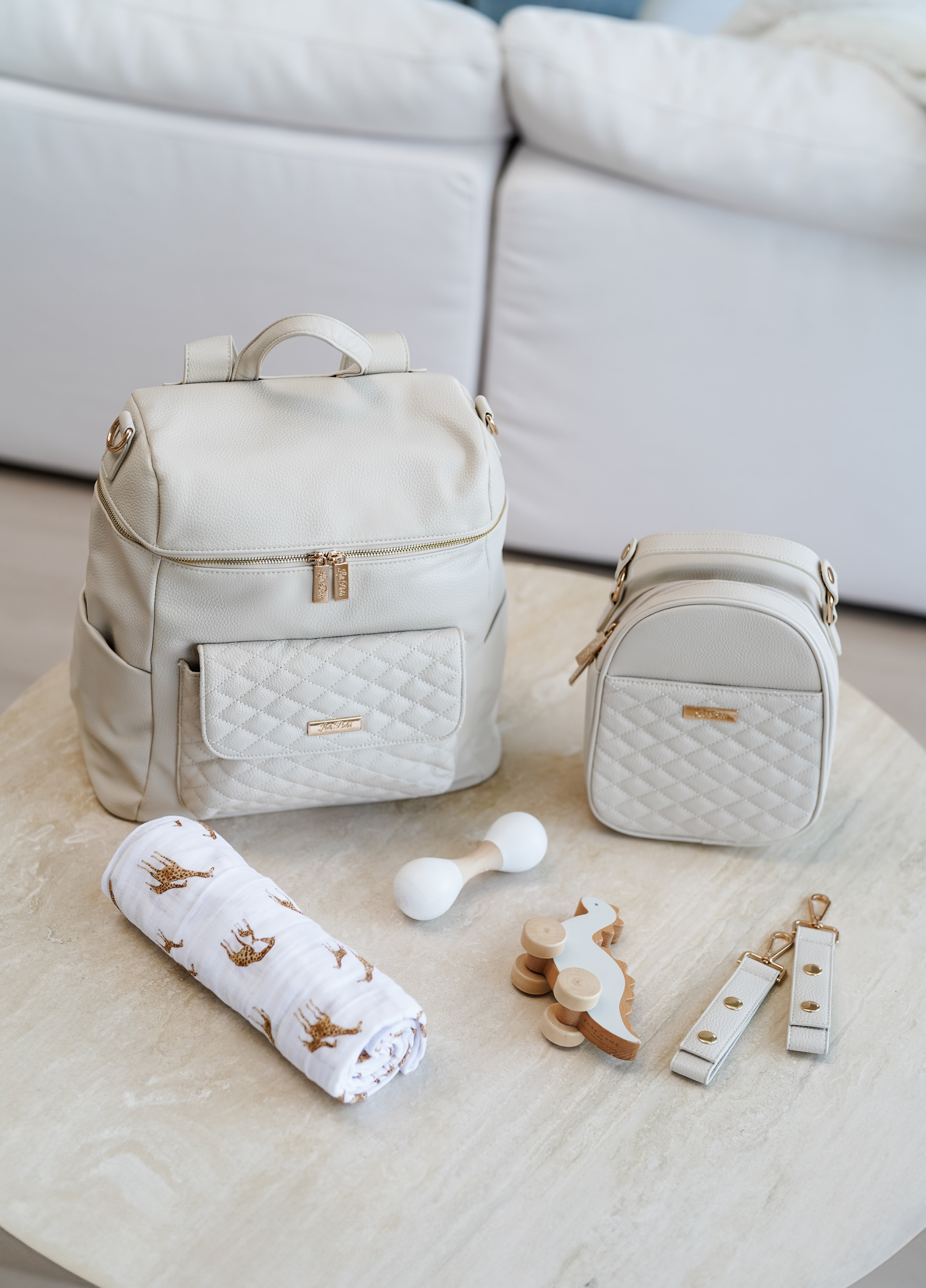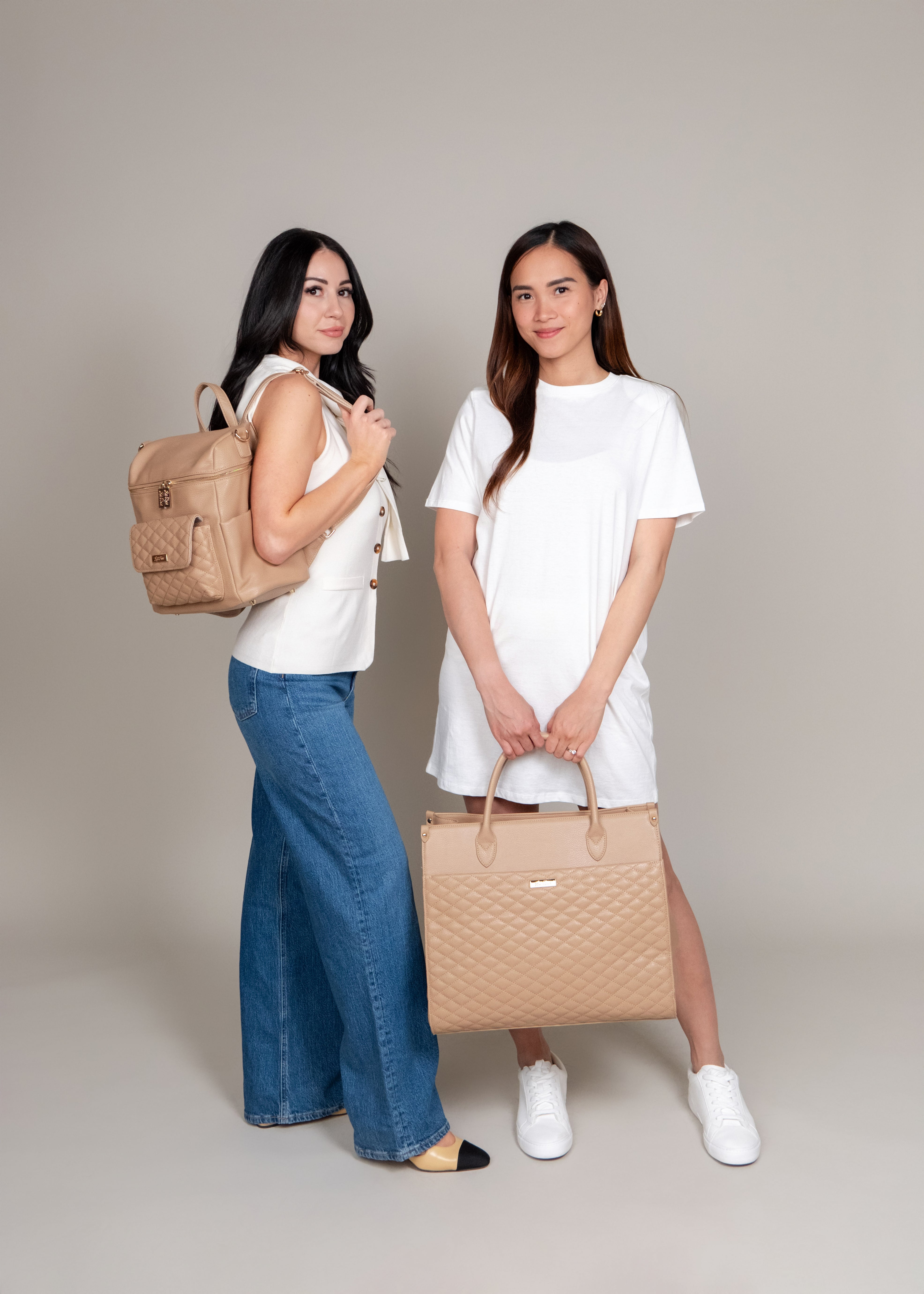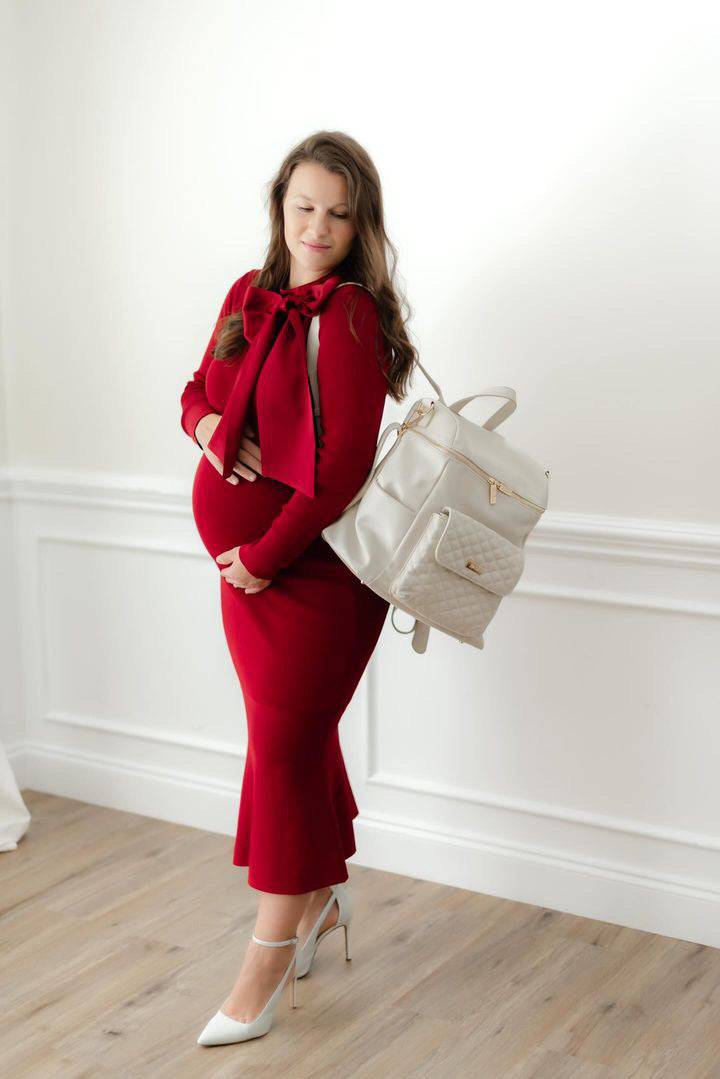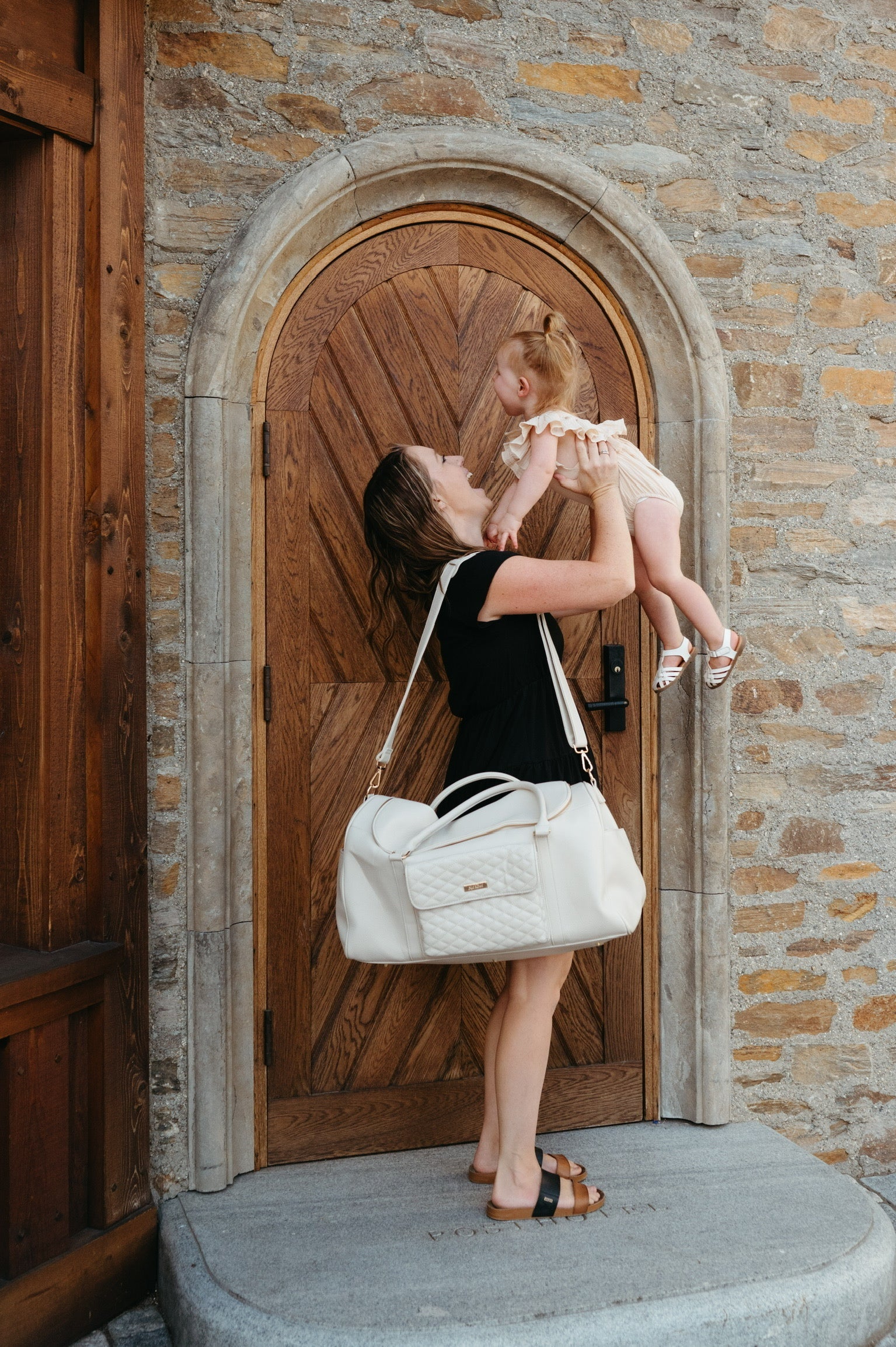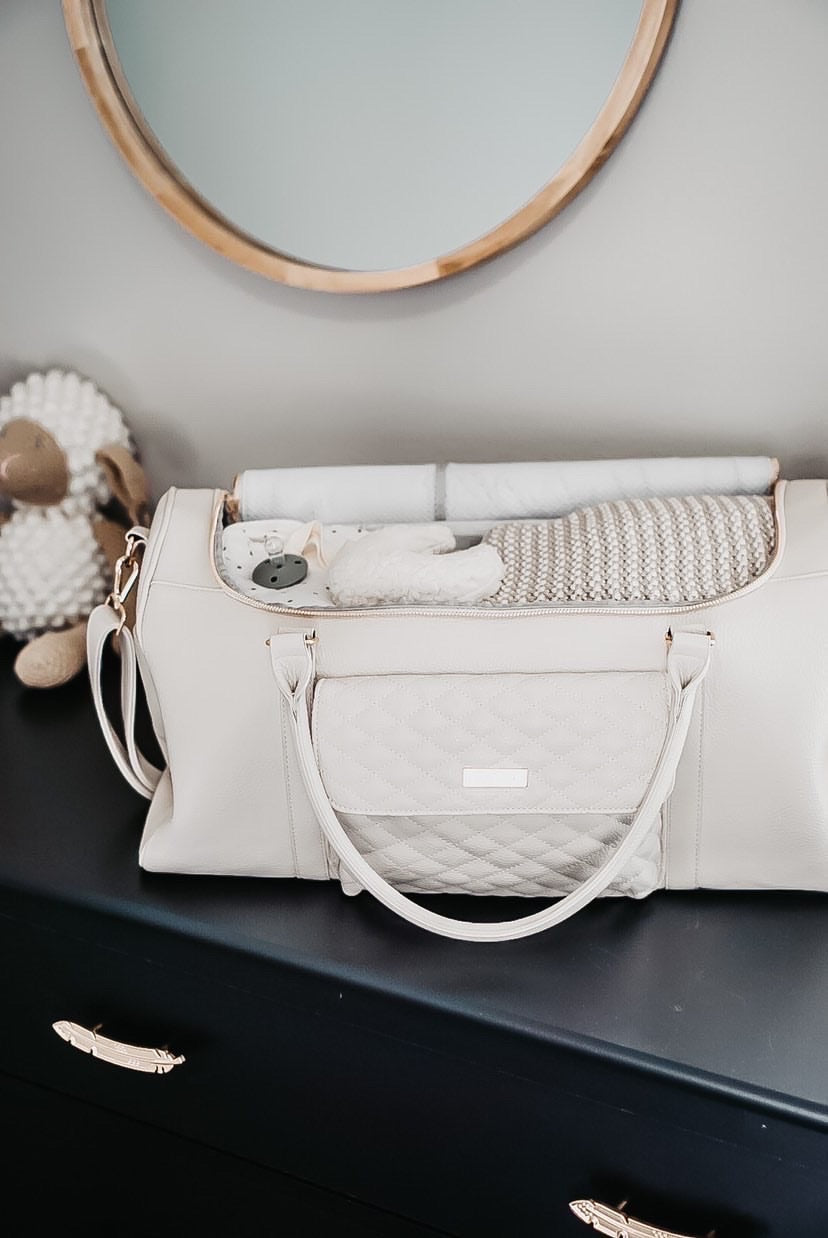
Essential Packing List for Flying with a Baby
It can feel challenging to fly with a baby, especially for first-time parents. But it can be doable and even pleasurable with careful preparation and the appropriate packing techniques.
Understanding what to pack when flying with an infant will make your journey easier and less stressful. From diapers to entertainment, this guide will cover everything you need to know in a checklist for flying with an infant and ensure you're ready for any last-minute surprises.
Now, let's get started!
Travel Essentials and Documents
Travel documentation for your baby and other necessary supplies should be the first things on your flying with infant checklist. You don't want to get to the airport and find out you have important documents missing. You'll need the following:
Passport/ID:
Your baby will need a passport for international flights. Be sure to plan ahead when applying for your passport, as it may take several weeks to process. Review your airline's guidelines for domestic flights, as they might request documentation of your infant's age, like a birth certificate, for babies sitting on your lap.
Ticket:
Even when your baby is on your lap (without a separate seat), most airlines mandate that they're included in your booking. This is possible either when making the reservation or at the check-in desk. Verify that your infant's details are on the list to prevent potential boarding problems.
Printed Itinerary and Travel Insurance:
A physical copy of your travel itinerary can be extremely helpful if your phone runs out of battery or becomes inaccessible. Moreover, if you have bought travel insurance, bring the policy details. It'll be beneficial in the event of unforeseen cancellations or medical emergencies.
Medical Information:
Health records for your baby are necessary, especially if they have allergies, medical conditions, or recent vaccinations. When traveling abroad, it's recommended that you carry your infant's vaccination records. This is especially important in nations that need specific vaccines for entry.
Changing Necessities and Diapers
Managing diaper changes while traveling is one of the main worries for parents taking a baby on a trip. A well-thought-out strategy for traveling with diapers can ensure you're ready for anything from small changes to major blowouts.
Diapers:
Bring one diaper for every hour of travel, plus a couple of extras for added precaution. If you'll be flying for six hours, you may pack at least 8-10 diapers. If you take a long international flight, pack enough diapers for one day in your hand carry and keep spares in your checked baggage.
Wipes:
Baby wipes are crucial for various purposes beyond diaper changes. Use them to wipe hands and faces or tidy up spills that are bound to occur.
Changing Pad:
A suitable changing table may not always be available due to limited space in airplane bathrooms. A foldable changing pad that’s easy to clean is essential for maintaining hygiene during diaper changes. Choose one that's easy to fold and carry.
Diaper Cream:
Flying may result in skin irritation, particularly in the dry airplane setting. Bring a small, travel-ready diaper cream to avoid a diaper rash. Choose a tube less than 3.4 oz if you plan to bring it on the plane to follow TSA rules.
Disposable diaper bags:
They’re convenient plastic bags that store dirty diapers until you can throw them away. They can also store dirty laundry, wipes, or any other items. Reusable wet bags are also highly effective as an environmentally conscious alternative.
Feeding Supplies
Feeding your infant while traveling by plane can be challenging. Having the correct supplies for feeding is essential for a smooth journey, whether breastfeeding, bottle-feeding, or starting solids.
Breastfeeding:
If you’re nursing, bring a nursing cover for added privacy, especially in crowded or public areas. It's advised to breastfeed your baby during takeoff and landing as the sucking action can ease ear pressure.
Remember to bring your breast pump, milk storage bags, and an insulated cooler for storing breast milk when pumping. Several airports provide private rooms– it's advisable to search for them while waiting during layovers.
Bottles and Formula:
Plan well if you choose to bottle-feed. Bring enough formula for the plane journey, with some extra in case of unforeseen delays. Measure the formula in advance and place it in bottles or a formula dispenser for convenient mixing while traveling by airplane.
Remember to bring your bottle warmer (if you use one) and sterilizing wipes to clean bottle nipples while out and about. Water used for baby formula isn’t subject to the TSA's 3.4 oz restriction. It's advisable to carry an empty bottle and ask flight attendants for hot water to prepare your baby's milk while traveling.
Snacks for Older Infants:
Pack some snacks for older babies. Snacks like teething biscuits, fruit puree pouches, or rice cakes are the best. They’re healthy and convenient to store and consume without creating a mess. Ensure you have more items than you need because journeys can last longer than predicted.
Burp Cloths:
Don't underestimate the spills of feeding a baby. Bring a couple of burp cloths to manage spit-ups or food spills. They can also replace wipes or napkins if necessary.
Baby Utensils:
If your kid is starting to eat solid foods, pack baby-sized cutlery and bowls. Suction cups on bowls help parents keep their kids from sliding off airline trays, which is helpful when the ride is bumpy.
Clothing
Ensuring your baby is content and properly dressed is crucial for a smooth flight. Consider these factors when preparing your baby's travel attire and planning your traveling with baby checklist on airplane.
Change of Clothes (for Baby):
Pack an additional full outfit for your baby when traveling by air in case things get messy. If there's space available, bring along two items, especially for flights that are longer in duration.
It's advisable to opt for outfits that are simple to switch out, such as onesies or two-piece outfits.
Steer clear of clothing items with an excess of buttons or snaps. They could make changing a diaper in small airplane restrooms more difficult.
Change of Clothes (for You):
Messes and accidents aren’t limited to your little one. Bring along another shirt for yourself in case something unexpected happens. A compact, thin top or jumper in your carry-on bag is ideal.
Layers:
Airplane temperatures vary, so dress your baby in layers. This enables you to change their attire according to the temperature inside the cabin. Bring a lightweight jacket or sweater and a cozy blanket for warmth and comfort. Blankets can serve as a play space and a nursing cover.
Socks and Hats:
Consider bringing a pair of socks to keep your baby's feet warm and a small hat to ensure their head stays warm if the cabin is cooler than anticipated.
Sleepwear:
If your flight is lengthy or falls during the baby's nap time, ensure the baby is dressed comfortably in sleepwear. A zippered sleeper simplifies diaper changes and keeps the baby warm during the flight.
Entertainment
Entertaining your baby on long flights can be difficult. Here are some smart choices to keep your baby entertained and content.
Pacifiers:
If your infant uses pacifiers, bring along some spares. They’re excellent for calming and can also assist in relieving ear pain during flight caused by changes in air pressure. Fasten the pacifier to a clip or strap to prevent it from dropping onto the unclean floor.
Top Toys:
Bring a couple of tiny, light toys your baby loves. Refrain from toys containing tiny pieces or noisy features that could disrupt fellow passengers. Teething toys are excellent for infants seeking comfort while flying.
Interactive Books:
Small, plush books with textures or flaps are ideal sources of entertainment. Baby-proof cloth books or engaging board books are light in weight and will entertain your baby for a prolonged time.
New Toys:
Consider taking a new toy your baby hasn't seen yet. This new item can help them remain engaged for extended periods while flying. Choose small and convenient toys to pack, such as stacking cups or crinkle books.
Teething Toys:
When your baby is teething, don't forget to bring their preferred teething rings or soft toys. Select toys that are simple to clean and compact enough to fit in your carry-on luggage.
Noise-canceling Headphones for Infants:
If your baby is easily disturbed by noise, consider bringing noise-canceling headphones designed for babies. They’ll safeguard the baby's ears from the airplane's loud engine noise. This can also improve their sleep quality while flying.
Sleeping Gear
Managing sleep while flying with a baby can be quite challenging. Packing the appropriate items can help your baby get enough sleep, giving you a more content and chilled-out travel partner.
Baby Carrier:
A soft baby carrier is essential for traveling by air. It keeps your baby close, lulls them to slumber, and gives you freedom of movement. It’s also beneficial for navigating through the airport and during the boarding process. Many infants find greater comfort in a carrier they’re used to, which helps them drift off to sleep more easily.
Travel Blanket:
Pack a lightweight, cozy blanket with a familiar scent. The recognizable smell will make your baby feel safer. Blankets can also serve as a pillow for your baby's head or a shield to block light while attempting to nap.
Portable White Noise Machine:
While the hum of the airplane engine may be calming for certain infants, it may be bothersome for others. A portable white noise machine (or a white noise app on your phone) can help you put your baby to sleep more quickly and keep them asleep longer while traveling by plane.
Sleep Sack:
If your infant is accustomed to sleeping in a sleep sack, remember to pack it. The familiarity and comfort of their regular bedtime routine can help them unwind and easily fall asleep.
Travel Pillow:
A compact travel pillow can be handy for you and your little one. It can help support your arm when carrying your baby or offer additional cushioning for your baby to lean on while on the plane.
Health and Safety Items
A well-sorted flying with baby checklist for health and safety ensures your infant's comfort and security throughout the trip.
Infant Pain Reliever:
Remember to bring a bottle of infant pain reliever, such as acetaminophen or ibuprofen. It can ease any discomfort caused by teething or ear pain caused by changes in cabin pressure. Talk to your child's doctor about the correct dosage before your journey.
Nasal Aspirator and Saline Drops:
Using a nasal aspirator and saline nasal drops can treat congestion and improve breathing for your baby. These are particularly beneficial if your baby is susceptible to colds or seasonal allergies.
Hand Sanitizer and Disinfecting Wipes:
Airports and airplanes contain a high amount of germs. Remember to bring hand sanitizer suitable for babies, and clean your hands before feeding or changing your baby's diaper. Also, bring disinfecting wipes to sanitize tray tables, armrests, and any other surfaces your baby may encounter.
Strollers and Car Seats
If traveling by air with a baby, you might be unsure whether you should bring your stroller or car seat. Here’s the information you need for a hassle-free trip with these belongings.
Stroller:
If you need a stroller when you arrive, most airlines permit you to check one at the gate for no extra cost. A compact, foldable stroller is perfect for strolling in the airport. You can use it before boarding, and it will be there for you upon disembarking from the plane. Consider using a travel system with a car seat attachment for extended journeys.
Car Seat:
If you bought a seat for your baby, use a car seat that is approved by the FAA. It will keep your baby safe and comfortable, especially if they sleep in it during the car ride. Make sure the car seat has a label that shows it’s okay to use on a plane. If you don't want to bring the car seat onto the plane, most airlines will let you check it in for free.
Final Tips
Traveling with an infant can go well if you’re properly equipped. Below are some last suggestions to help simplify your trip:
Get Ready Ahead of Time: Organize your baby's necessities the evening before to prevent rushing at the last minute. Verify your list of items to ensure you have all the necessary things.
Use Curbside Check-In: If you’re trying to manage a stroller, car seat, and luggage, curbside check-in can be extremely helpful. Several airlines provide this option, enabling you to check in your luggage upon your arrival at the airport.
Board Early: Most airlines offer early boarding for families with young children. Use the additional time to get seated, arrange your baby's things, and make yourself comfortable before the plane becomes full.
Stay Relaxed: Even the most well-thought-out plans can go wrong when traveling with a baby. Remaining composed is crucial. If your baby becomes irritable or things don't go as planned, remember that it's all part of the experience.
Traveling with an infant doesn’t need to be overwhelming. Using this traveling with a baby checklist on an airplane, you'll be ready for whatever comes your way during the journey. Don't forget to pack carefully, bring a good sense of humor, and have fun on the adventure with your child!
Travel Smart with Luli Bebé!
For parents looking for the ultimate travel companion, the Monaco Travel Bag is a stylish, functional solution. Its multiple compartments allow you to organize baby essentials easily, making it perfect for air travel.
For diaper changes on the go, the Monaco Diaper Bag offers a sleek design with practicality in mind. It ensures you have everything you need at your fingertips.
Ready to travel stress-free? Check out our range of bags designed to make your journey with your baby a breeze!


